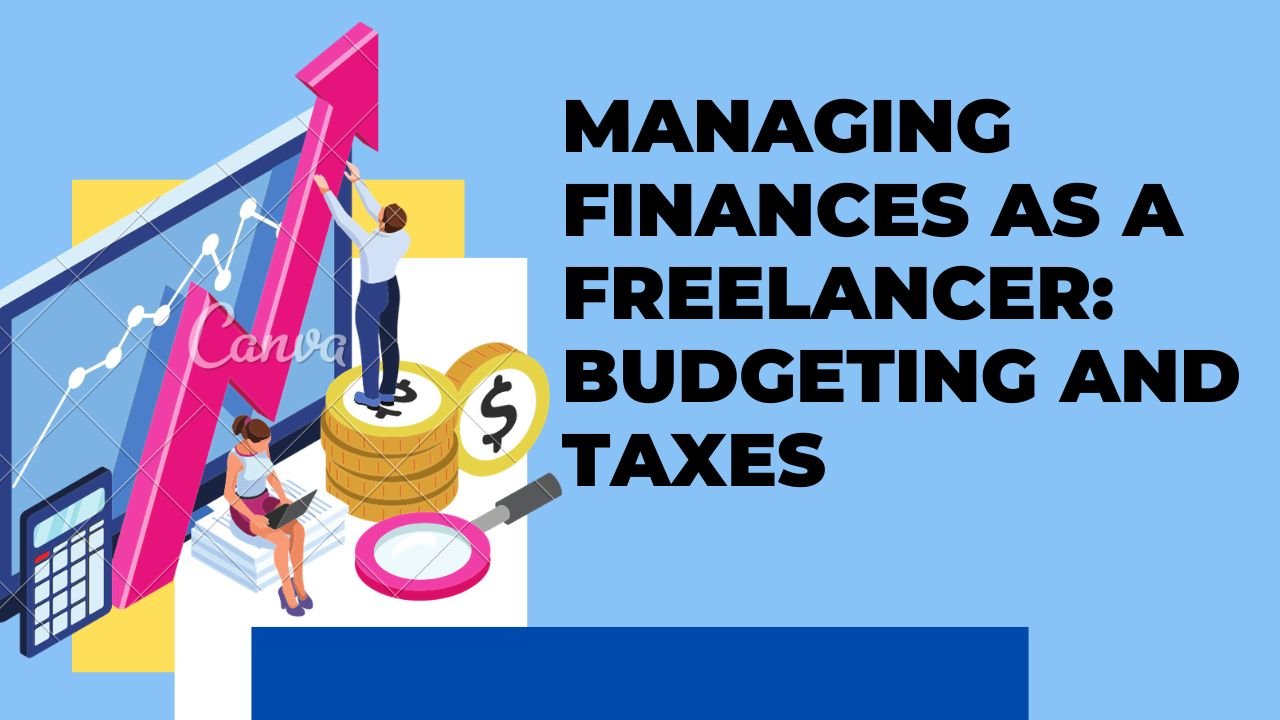Freelancing can be a rewarding and flexible way of working, but it also comes with its own challenges and responsibilities. One of the most important aspects of freelancing is managing your finances, which involves planning, tracking, and optimizing your income and expenses. In this article, we will share some tips and solutions on how to manage your finances as a freelancer, especially when it comes to budgeting and taxes.
Why Is Financial Management Important for Freelancers?
Financial management is the process of creating and implementing a financial plan, budgeting, tracking income and expenses, and making informed investment decisions. As a freelancer, financial management is essential to maintain stability and success. Some of the benefits of financial management for freelancers are:
- It helps you avoid cash flow problems and debt by ensuring that you have enough money to cover your personal and business expenses.
- It helps you save for your short-term and long-term goals, such as emergencies, retirement, education, or vacations.
- It helps you reduce stress and anxiety by giving you more control and confidence over your financial situation.
- It helps you grow your business by allowing you to invest in tools, equipment, marketing, or training that can improve your skills and services.
- It helps you comply with tax laws and regulations by keeping track of your income and expenses and filing your tax returns on time.
How to Create a Budget as a Freelancer
One of the fundamental steps in managing your finances as a freelancer is creating a comprehensive budget. A budget is a plan that shows how much money you expect to earn and spend in a given period of time, usually a month or a year. A budget can help you:
- Monitor your income and expenses and identify areas where you can save or spend more.
- Allocate your money to different categories according to your priorities and needs.
- Adjust your spending habits and lifestyle to match your income level.
- Set realistic and achievable financial goals and track your progress towards them.
To create a budget as a freelancer, start by calculating your monthly expenses, including rent/mortgage, utilities, groceries, transportation, insurance, debt payments, entertainment, etc. You can use software like Mint.com or apps like YNAB to pull in your financial statements and categorize your expenses automatically. Next, estimate your monthly income based on your average earnings from previous months or years. You can use software like FreshBooks or apps like Wave to track and invoice your clients promptly and accurately. If your income varies from month to month, you can use the lowest or average amount as a baseline. Then, subtract your total expenses from your total income to get your net income. This is the amount of money you have left after paying all your bills. Ideally, you want this number to be positive, meaning that you are earning more than you are spending. If it is negative, meaning that you are spending more than you are earning, you need to find ways to increase your income or reduce your expenses.
How to Save Money as a Freelancer
- Build an emergency fund that can cover at least three to six months of living expenses in case of unexpected events such as illness, injury, loss of clients, or natural disasters.
- Invest in your retirement by contributing to a retirement account such as an IRA or a 401(k) plan that can provide you with tax benefits and compound interest over time.
- Achieve your personal goals such as buying a house, traveling the world, or starting a family.
To save money as a freelancer, you need to set aside a percentage of your income every month for savings. You can use software like Digit or apps like Qapital to automate this process by transferring money from your checking account to your savings account based on rules that you set up. For example, you can save 10% of every payment you receive from clients or round up every purchase you make with your debit card to the nearest dollar and save the difference. You also need to choose where to keep your savings based on your goals and risk tolerance. For example, you can keep your emergency fund in a high-yield savings account that offers easy access and security; invest your retirement savings in a diversified portfolio of stocks, bonds, mutual funds, ETFs, etc. that offer higher returns but also higher risks; and save your personal goals in a separate savings account or a certificate of deposit that offers a fixed interest rate and a maturity date.
How to Manage Your Taxes as a Freelancer
- Paying self-employment tax, which is a combination of Social Security and Medicare taxes that fund these programs for retirees and disabled people. The self-employment tax rate is 15.3% of your net earnings from self-employment, which is your gross income minus your deductible business expenses.
- Paying income tax, which is based on your taxable income, which is your adjusted gross income minus your personal exemptions and deductions. The income tax rate varies depending on your filing status and income bracket, ranging from 10% to 37%.
- Paying quarterly estimated taxes, which are payments that you make to the IRS every three months to cover your self-employment tax and income tax liability for the current year. You need to pay quarterly estimated taxes if you expect to owe more than $1,000 in taxes for the year.
- Filing your annual tax return, which is a form that you submit to the IRS by April 15th of the following year to report your income and expenses for the previous year and calculate your final tax liability or refund. You need to file a Schedule C or C-EZ with your Form 1040 to report your net earnings from self-employment and a Schedule SE to calculate your self-employment tax.
To manage your taxes as a freelancer, you need to:
- Keep track of your income and expenses by using software like QuickBooks or apps like Expensify to record and categorize every transaction related to your business. You also need to keep receipts, invoices, bank statements, and other documents that can support your claims in case of an audit.
- Separate your business and personal finances by opening a separate business bank account and using it exclusively for your business transactions. This can help you avoid confusion and errors when reporting your income and expenses.
- Set aside money for taxes by saving at least 25% of your income in a separate savings account or a tax payment service like Painless1099 that automatically withholds taxes from every payment you receive from clients.
- Hire a professional help for taxes by consulting with a certified public accountant (CPA) or a tax preparer who can advise you on tax laws and regulations, help you optimize your deductions and credits, prepare and file your tax forms, and represent you in case of an audit.
Conclusion
Managing your finances as a freelancer can be challenging but rewarding. By creating a budget, saving money, and managing your taxes, you can achieve financial stability and success as a freelancer. Remember that you are not alone in this journey and that there are many resources and tools available online that can help you with financial management. You can also join online communities and networks of freelancers who can share their experiences and tips with you.
Freelance Photography: Tips for Building a Successful Business




